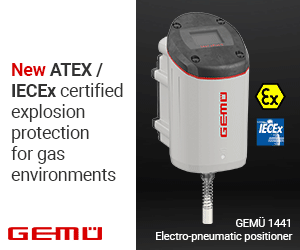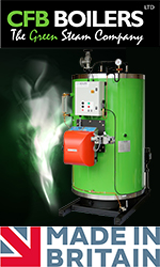Maximizing Heater Performance: Operation and troubleshooting strategy
Heat is a form of energy that is transferred between two systems or a system and its surroundings by virtue of a temperature difference. Heat is energy in transition. Heat furnace is the equipment referred to as heater. It is in such equipment that the internal energy of material is converted to work so that chemical transformation can take place. It is the industrial stove. Its lighter is the pilot. Fuels burn in heater and the heat generated is transmitted to the fluid material. Heat transfer in heaters take place in three forms at four different stages. The forms are radiation, convection, and conduction. The transfer of heat of combustion from the flame tips is by radiation.
(This is the lower section of the heater where the burners are) while heat transfer across the tube walls to the process fluid is by conduction (This section is where the tubes are distributed in the heater interior). Convection is the heat transfer within the heater box between the flame and the tube walls as wall as the transfer within the fluid molecules due to fluid motion. Heater has components such as stack damper, draft gauge, soot- blowers, pilot and main burners etc which operator needs to be familiar with.
A heater is defined as the equipment in which combustion (burning of fuel in air) takes place. That is to say that in it heat is generated to some required temperature. Sometimes heater is described by the kind of fuel that is burnt in it, eg fuel gas or fuel oil heater.
Typical operation of heaters
- How to prepare a heater for start up
- How to light a pilot burner
- How to light fuel gas main burner
- How to light fuel oil main burner
- How to operate the draft
- How to set the damper
Preparing heaters for start up
Process operator need to confirm that,
- All associated instrument are ready in good working condition
- Fuel is available and lined up. Of importance is the confirmed satisfactory.
- The pilot burner are serviced and ready.
- The main burners are serviced purged and ready
- Atomizing steam is available and ready for use in fuel oil burners.
- Snuffing steam system is ready
- Water sprinklers system is ready where applicable
- Heater box is free of foreign bodies
- Refractory material are well fixed and in good condition
- Heater man ways and pip holes are closed
- The draft gauge is in good condition
- The damper is in good condition
- The air register are in ready condition
- Process fluid flow in the heater is in commissioned
- Heater convection section cooler (in most instance hot oil passes across to economize heat) is commissioned.
- The solenoid safety system is active.
Well having gotten these assurance all you need to do is to confirm the combustibles level by safety inspection. When combustibles and oxygen level are satisfactory proceed to light the pilots.
To light pilot burner
Observe safety rules and regulations.
- Get the pilot lighter, check its nozzle and make sure it is fuel filled.
- Inform the panel man / lighter using a match or cigarette lighter and adjust its flame.
- Light the lit pilot lighter using a match or cigarette lighter and adjust its flame.
- Insert the lit pilot lighter into the lit hole to the tip of the pilot burner.
- Crack open the pilot burner fuel gas valve to release fuel gas through the pilot nozzle.
- As the pilot lit remove the pilot lighter and cut off its fuel to put off air light.
- Adjust the pilot burner flame by throttling the fuel gas flow and the air registers.
- Communicate the status to the panel man / chief operator.
- Set the damper.
To light Fuel gas main burner
The fuel gas main burner is only a big pilot. Follow the same procedure to light it. The only difference is that you do not need a separate light since the pilot burner is just there to serve you. However, there are secondary air registers to regulate the oxygen air requirement for burner and pip-hole to view the flame status.
To light fuel oil main burner
Understanding the fuel gas burner is not enough to light a fuel oil burner because there are a lot of differences. Features like atomizing steam two inlets to burner ( one for steam and the other for oil) etc that we need to be familiar with.
Drain all condensate from the steam lines first
- Crack open the atomizing steam to the burner nozzle to purge nozzle tip.
- Crack open the fuel oil valve to commission the oil flow to burner nozzle making sure that the steam flow is slightly more than the oil flow. With the pilot already lit the oil will immediate ignite.
- Let the fuel oil pressure differential be within the set limit. Maintain fuel oil circulation at all time.
- Throttle the two valve together until the required flame achieved.
- Adjust the secondary air register to regulate the flame color.
To operate draft gauge
- Adjust the draft gauge to give you the pressures you need across the heater by regulating the reading on the indicator. The gauge scale graduated in millimeters (mm) or water.
- Keep the pressure of the heater radiation section on the slight positive side say 2-5mm of water.
- Keep the pressure of heater convection section on the slight negative side, say 2-5mm of water.
- Above convection section should be more negative while the below convection section a little above zero.
Just note that the pressure should be such that a little vacuum surge or pressure differential is created to provide the driving force necessary for effective pressure control.
To set stack damper
The stack damper is like the chimney of the kitchen where flue gas escapes to the atmosphere. So be careful not to loose off the heat you generated before using it. For efficient heater performance keep the damper at 60% opening.
- Adjust the damper opening by hand turning the handle across the scale of the damper. The scale is mostly graduated in percentage of the damper opening.
- Keep the setting initially at 30% and gradually raise it to 60%. This is mostly applicable to atmospheric heaters.
To soot blow heater tubes
Soot blowing is the removal of carbon deposits and ash on the surface of heater tubes and on the flue gas passages which result from fuel combustion. Heater soot-blow could be carried out manually or automatically depending on the provision. Heater tubes are blown with steam. Let us look at the basic requirement needed to soot-blow heater tubes from deposits of carbon that results from fuel combustion.
- Check and drain any condensate from the steam line.
- Hand turn the blower shaft to free it from stiffness.
- Inform the panel man/ chief operator your readiness to begin soot- blowing.
- Open the damper a little above normal to allow quick relief of soot through the stack.
- Develop your sequence steps if blower is on manual mode.
- Advance the soot blower following the sequence developed one after the other.
- Isolate the steam and return the damper setting to the position after the soot-blowing operation.
Heater Troubleshooting Strategies
Table 1 to Table 3 highlights different troubleshooting strategies of process heaters.
Table 1. Gas burner fails to ignite
| PROBLEM | REMEDIES |
| Is the gas burner purged? | Remove burner and free it’s pores |
| Is the fuel gas pressure adequate? | Maintain fuel gas pressure |
| Is the fuel gas purity normal? | Check gas composition |
| Is the safety provision status normal? | Check safety instruments loop. |
Table 2. Oil burner fails to ignite
| Is the fuel oil burner purged? | Purge out burner tip pores with steam |
| Is the fuel oil pressure adequate? | Confirm oil pressure |
| Is the fuel oil circulation adequate? | Maintain oil circulation |
| Is the fuel oil composition normal? | Confirm oil composition |
Table 3.Fuel oil burner leaks
| Is the leakage inside the heater? | If so, shut down the heater, clean spill and fix the leak |
| Is the leakage outside the heater? | Provide steam to leaking point, flush spill and fix leak. |
Conclusion
In order maintain the performance and extend the service life of process heaters, it is important to understand their operational procedure and troubleshooting strategies. Real time monitoring of the heater performance will ensure that problems are identified on time and the right troubleshooting strategy is enforced.



























































































































